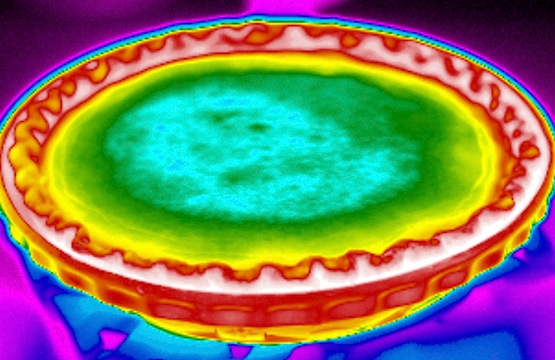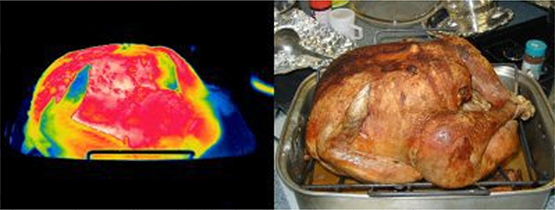

The upcoming Thanksgiving holiday here in the United States is a great time to "Think Thermally®" and have fun with your thermal imager as you get ready to celebrate with family and friends. I'm sure many of you enjoy hanging out in the kitchen before the big meal, trying to steal a quick bite. This year, for those of you who have access to a thermal imager, consider bringing it along. You might be amazed by what can be seen.
In our Level I training classes we conduct a number of demonstrations using everyday items, many of which you might find in your kitchen. This approach to science is designed to take complex heat transfer principles and boil them down into easily understood concepts. That is, we focus on what the thermographer (not a professor or an engineer) should understand to be successful with the technology. This approach to learning, what we call "Kitchen Physics", goes a long way in making that happen and the holiday kitchen can certainly provide a target-rich environment for discovery.
For example, take the traditional Thanksgiving turkey. Though both parts of a turkey emerge from either the oven or the fryer at the same temperature, the moist breast meat contains more BTUs of heat energy than the dry wing bone. The result, as the turkey cools off, we quickly begin to see changes in surface temperature between the wing and the breast that are happening thanks to differences in thermal capacitance.

The turkey shows us why we can conduct roof moisture inspections or find areas of wet insulation in a wall system using infrared. It is also why thermographers at chemical plants, oil refineries and paper mills can detect levels in their tanks or why infrared technicians can see disbonds or moisture intrusion in aerospace components with thermal NDT.

The two thermal images above are perfect examples of thermal capacitance causing hot and cold spots. At the left, the lighter, warmer, signatures indicate potentially wet areas of insulation within the roof system. At right, water trapped in the honeycomb core shows up cooler due to its high thermal capacitance during an inspection of an Airbus elevator.